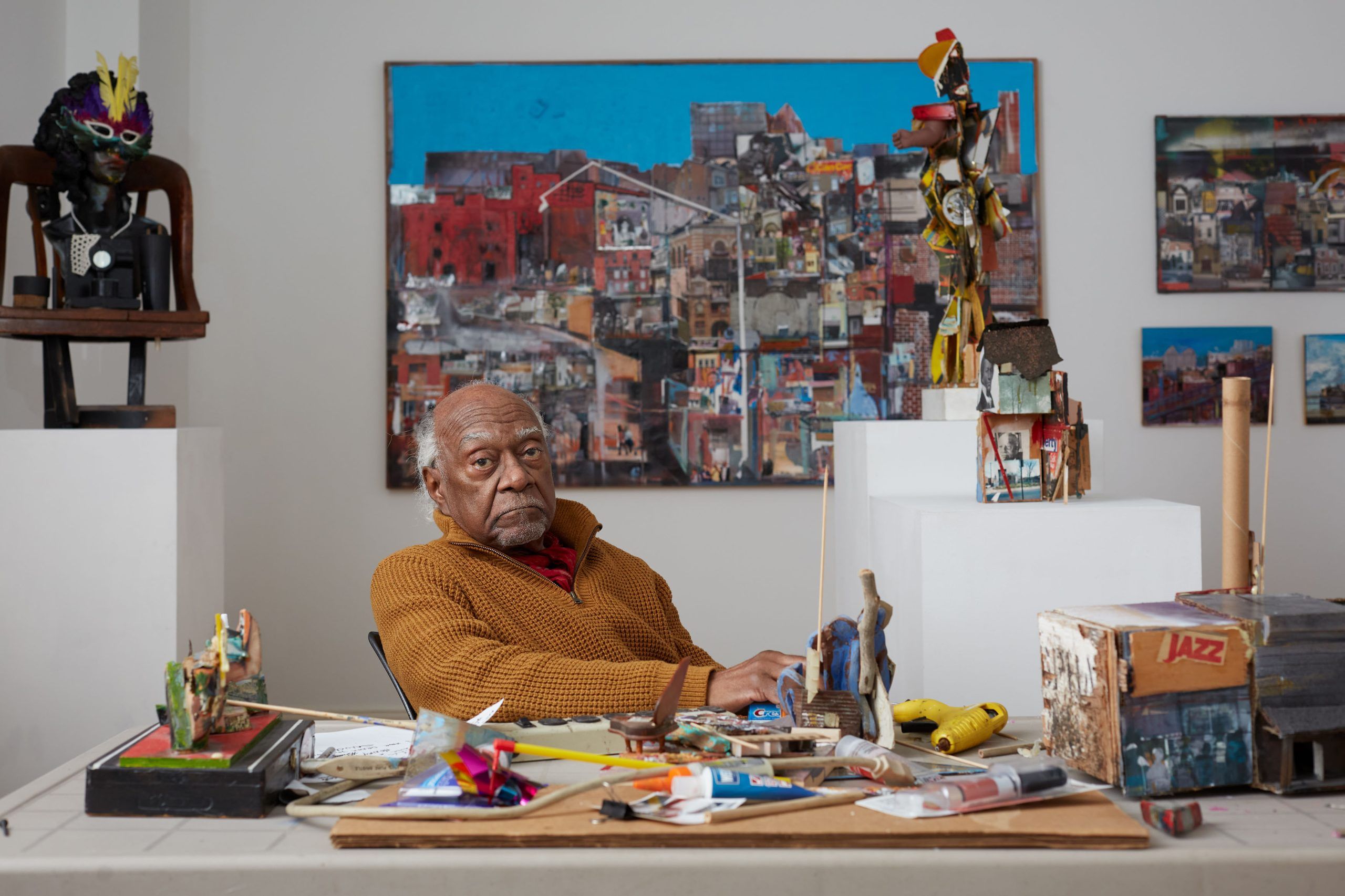
DOCENT PICK
Leroy Johnson at Margot Samel
02/02/2025
We had long been waiting for an exhibition where an artist’s freshness and lightness are so profound that their message cuts through you and reality blinds you. At last, we have it.
Margot Samel has chosen to showcase the work of Leroy Johnson—an artist every collector should know, given the significance and singularity of his practice in the society we inhabit today. His work is not merely a reflection of the world but an urgent dialogue with it, where raw energy and poetic abstraction collide. Through his deeply personal yet universally resonant compositions, Johnson captures the fractures of urban life, history, and identity with an intensity that is both piercing and revelatory.
Margot Samel has chosen to showcase the work of Leroy Johnson—an artist every collector should know, given the significance and singularity of his practice in the society we inhabit today. His work is not merely a reflection of the world but an urgent dialogue with it, where raw energy and poetic abstraction collide. Through his deeply personal yet universally resonant compositions, Johnson captures the fractures of urban life, history, and identity with an intensity that is both piercing and revelatory.

Leroy Johnson (1937–2022) did not just document Philadelphia—he conjured it. With the precision of an archivist and the soul of a poet, he captured the city not as it appears, but as it is lived, as it is felt. His works are not static records; they breathe, they pulse with history, they vibrate with memory. Through decades of observing, teaching, and working as a social worker and administrator, Johnson absorbed the weight of the streets, the invisible rhythms of those who moved through them. His art was never separate from his life—it was shaped by it, inseparable from the world he navigated.
This exhibition gathers a selection of his house sculptures, objects that are part shrine, part testament, part restless improvisation. These are not mere structures but relics of a city in flux—layered, weathered, inscribed with time. Melding painting, ceramic, collage, and photography, Johnson built with the debris of the everyday: scraps of signage, worn planks, found textures, discarded symbols. Through his hands, the city’s castoffs became its echoes, and its echoes became a new kind of history.
To call them houses is almost misleading. They are more than architecture—they are psychic landscapes. They hold within them the weight of race, class, displacement, and survival. They are spaces of resilience, built in honor of those who endured. Johnson did not turn away from the realities of poverty, systemic racism, and gentrification. But within the same frame, he insisted on care, on community, on joy. His compositions are constellations of contradiction: headlines of war and the AIDS epidemic appear beside sculpted birds nesting in the eaves. A rooftop explodes with pink feathers.
Johnson often called himself an outsider, not simply because he was self-taught, but because he stood at the margins of the art world—sometimes by circumstance, sometimes by defiance. A mentor to many, a peer to few, he built his own language outside of institutions. He worked not for validation but from necessity, transmuting the dust of the city into something holy.
His sculptures are not monuments; they are living things. They refuse to be pinned down, to be reduced to one meaning. They shift and unfold, as cities do, as time does. Their surfaces carry the weight of stories unspoken, of lives unseen, of history pressing forward even as it erases itself.
To stand before them is to stand at the threshold of a place both real and imagined. A place both lost and found. A city remembered in fragments, resurrected in light.
To stand before them is to stand at the threshold of a place both real and imagined. A place both lost and found. A city remembered in fragments, resurrected in light.
Why is that exhibition significant?
Leroy Johnson’s exhibition reveals many things. First, it demonstrates that magic and perspective can be conjured from the simplest of materials—wood, glue, a touch of paint, and, above all, an extraordinary depth of talent. Second, it affirms that in the heart of SoHo, at the crossroads of Lower Manhattan, a spirit of critique, intelligence, and audacity remains alive and well.
Somewhere between the artist studios of Gordon Matta-Clark, who redefined architecture, and Agnes Denes, who sought to merge artistic creation with pressing societal issues, Johnson’s work finds its rightful place. His exhibition does more than take up space—it resonates. It reverberates with ideas rarely encountered elsewhere, ideas that push beyond the confines of convention. Johnson’s vision, deeply rooted in history yet fiercely contemporary, reminds us that art is not just an act of creation, but an act of resistance, of memory, of transformation.